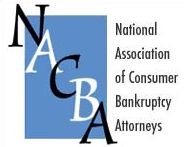Rebuilding Your Credit After Bankruptcy
Bankruptcy is not the end of the world when it comes to credit but rebuilding your credit is something you will have to actively work toward. Your credit will not rebuild itself. However, if you take the necessary steps to rebuilding credit after bankruptcy, you will see your credit score rise in no time.
- Develop a budget and pay all existing bills on time. Bankruptcy does not forgive all bills that you currently have to pay. The bills you are left with will need to be paid on time. To ensure your success with this and to make sure that you pay each bill on time until it is paid off, you will want to develop a budget. Make sure you set enough aside each month for these expenses so you can stay on top of each payment. You may want to even set reminders for yourself to make the payments so you do not end up facing bankruptcy again in the future.
- Live below your means. Bankruptcy is not a “get out of jail free” card. Just because you were able to eliminate some of your debt through this avenue does not mean that you should start racking it up again. Learn from your mistakes and use your budget to live below your means. Doing this will free up some of your cash so you can begin saving or even prepare for opening a secured credit card through your bank. Whatever you do, do not spend more money than you have.
- Get a secured credit card. One good way to rebuild credit after bankruptcy is to apply for a secured credit card from a bank. You will want one that reports to all three major credit bureaus so that your on time payments will be continuously reported to get you a better credit score. With a secured credit card, you make a deposit and then your credit limit is the deposit minus all fees. If there is an annual fee of $19 and you make a deposit of $200, your credit limit will be $181. The best way to use this secured credit card is to only use it for small purchases and pay the bill on time. Ideally, you want to keep the balance low, at only 10-15% of the credit line every month after your payment. With responsible practices, you may find that your credit limit is increased with no additional deposit after some time or you may even have the secured credit limit transitioned into a traditional line of credit.



